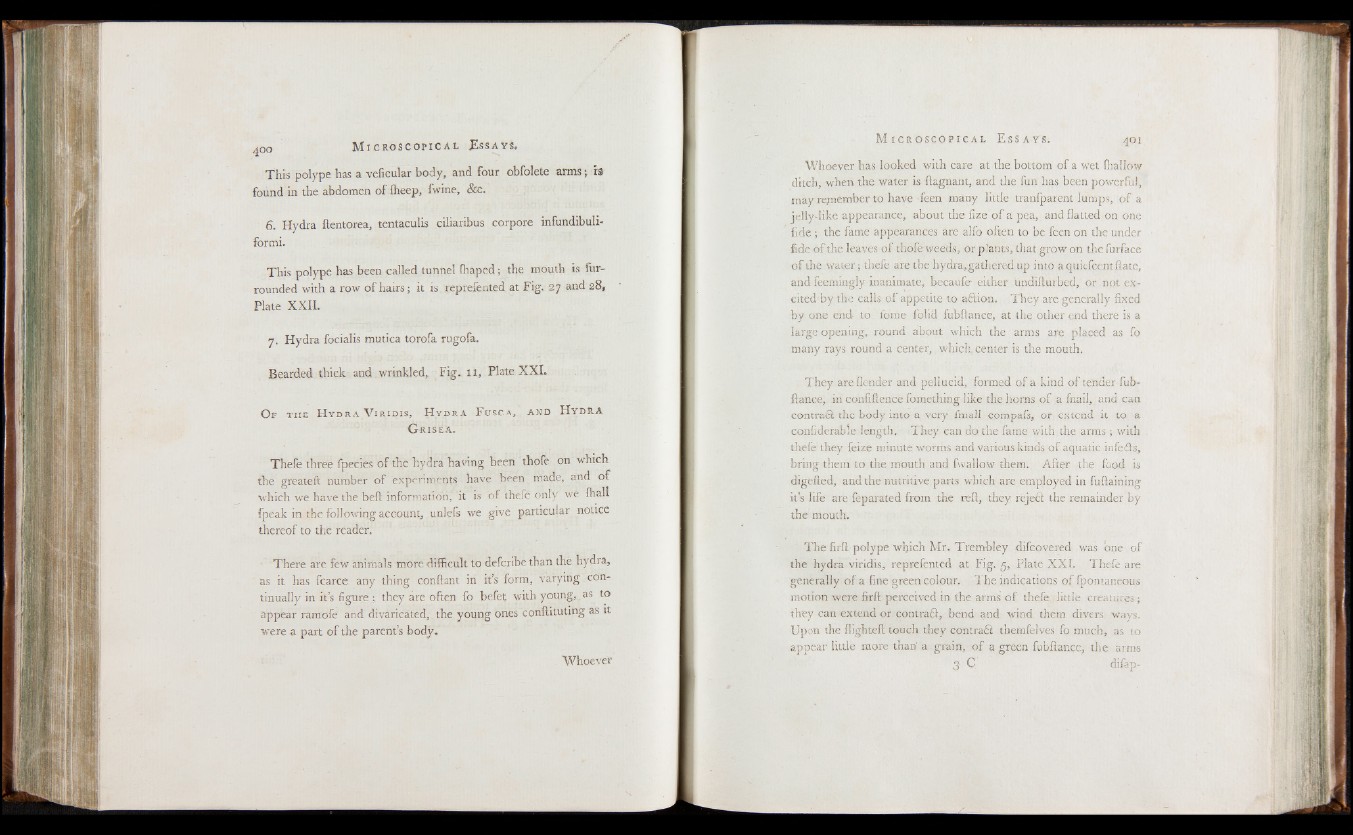
This polype has a veficular body, and four obfolete arms; is
found in the abdomen o f fheep, fwine, See.
6. Hydra ftentorea, tentaculis ciliaribus corpore infundibuli-
fbrmi.
This polype has been called tunnel lhaped; the mouth is fur-
rounded with a row o f hairs; it is reprefented at Fig. 27 and 28,
Plate XXII.
7. Hydra focialis mutica torofa rugofa.
Bearded thick and wrinkled, Fig. 11, Plate XX L
Of the Hydra V iridis, Hydra Fusca, and Hydra
G-risea.
Thefe three fpecies o f the hydra having been thofe on which
the greatelt number o f experiments have been made, and o f
which we have the belt information, it is o f thefe only we fhall
fpeak in the following account, uniels we give particular notice
thereof to the reader.
There are few animals more difficult to deferibe than the hydra,
as it has fcarce any thing conftant in it’s form, varying continually
in it’s figure ; they are often fo befet with young,. as to
appear ramofe and divaricated, the young ones conftitutmg as it
were a part o f the parent’s body.
"Whoever
Whoever has looked with care at the bottom of a wet ffiallow
ditch, when the water is ftagnant, and the fun has been powerful,
may remember to have Teen many little tranfparent lumps, of a
jelly-like appearance, about the flze o f a pea, and flatted on one
fide ; the fame appearances are alfo often to be feen on the under
fide o f the leaves o f thofe weeds, or plants, that grow on the furface
of the water; thefe are the hydra, gathered up into a quiefeentflate,
and feemingly inanimate, becaufe either undifturbed, or not excited
by the calls of appetite to aftion. They are generally fixed
by one end- to lome folid fubflance, at the other end there is a
large opening, round about which the arms are placed as fo
many rays round a center, which, center is the mouth.
They are [lender and pellucid, formed of a kind o f tender fub-
ftance, in confiftence fomething like the horns o f a fnail, and can
contraft the body into a very fmall compafs, or extend it to a
confiderabie length. They can do the fame with the arms ; with
thefe they feize minute worms and various kinds o f aquatic infedts,
bring them to the mouth and fwallow them. After the food is
digefted, and the nutritive parts which are employed in fuftaining
it’s life are feparated from the reft, they rejeft the remainder by
the mouth.
The firft polype which Mr. Trembley difeovered was one of
the hydra viridis, reprefented at Fig. 5, Plate XXI. Thefe are
generally of a fine green colour. The indications of fpontaneous
motion were firft perceived in the arms o f thefe little creatures;
they can extend or contraft, bend and wind them divers ways.
Upon the flighteft touch they contract tbemfelves fo much, as to
appear little more than' a grain, o f a green fubflance, the arms
3 C difap